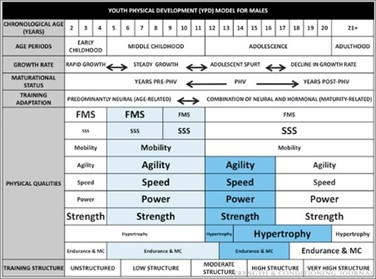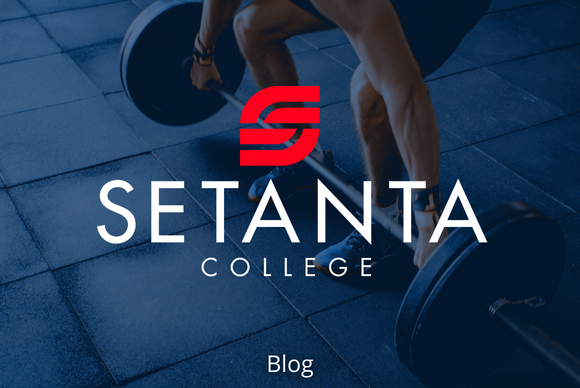In our latest article, Setanta lecturer and S&C Coach Greg Bennett discusses important aspects to consider in a youth player pathway. Through his coaching business GB Coaching, Greg leads the Youth Player Pathway in Raheny GAA and details how this is implemented below.
Physical Activity and Involvement in Sports
The last few years have shown all of us the value that sports can have for young people and their overall health and happiness. Fostering a love of physical activity and involvement in sports from a young age is something that can provide so many benefits, both physical and mental, for those involved. As coaches, our role with young players is vitally important. We have the opportunity to help develop this love of sport and also provide each young person with an enjoyable and worthwhile experience through our coaching approach.
Long-Term Athletic Development Models

When it comes to youth coaching, the idea of Long term athlete development has been around for some time. Several models have been created that aim to provide a framework for coaches to consistently develop “athleticism” throughout childhood and adolescence to improve physical performance, increase robustness and develop confidence and athletic competence. These frameworks can be very useful for providing an overview of how youth training can be structured and progressed. An example of one such youth athletic development model is shown here.
The YPD model created by Rhodri Lloyd and Jon Oliver is an adaptation of the original LTAD model put forward by Istvan Balyi. The YPD model takes elements of the LTAD model and builds upon them, suggesting a more holistic athletic development approach with the inclusion of considerations for training power, agility, and hypertrophy. These models help to show the various areas of physical development which can be focused on throughout childhood and adolescence. They also take into account areas such as growth and maturation and suggest that certain types of training may be most appropriate and beneficial at certain stages of development for a young person.
The youth player pathway that we have created at Raheny GAA club is based on these ideas. Like many GAA clubs, we have teams ranging from U8 all the way to U19. Providing appropriate, quality coaching for so many teams is a challenge for every club.
Three Key Areas in a Youth Player Pathway
The main goals of the youth player pathway are:
- To provide quality, consistent and age-appropriate athletic development for all young players.
- Educate coaches on the various elements involved in youth athletic development and help them to implement it on the pitch and in the gym.
- Create a culture of excellence around coaching in the club.
- Provide an enjoyable experience for our young players allowing them to play and stay in the club.
These goals are then built around a few key areas which we will address in this piece.
Education
A key aim of the youth player pathway is to provide education for our coaches around the areas of physical development that are vital for all young athletes. Our aim is to build an understanding of key areas such as fundamental movement skills, speed, strength, agility, power, hypertrophy, mobility, and endurance. Our monthly workshops have been based around topics from these areas and have allowed us to up-skill our coaches and also discuss their experiences of implementing these training elements. It also gives us an opportunity to start to use a common language as a club and dispel some of the myths and misconceptions that may exist in certain areas. One of the key aims of the pathway is to bring about a consistent approach across age groups when it comes to athletic development. Our workshops allow us to provide a clear idea on what is involved in each area and make sure that we are all trying to implement appropriate training for the various age groups. There is a large practical element in our workshops with coaches coming together to sample and learn about the different ways to integrate athletic development into their sessions. Because we are working in an amateur setting, these workshops are vital to assist our volunteer coaches and allow them to feel comfortable with some of the concepts.
Strength Training
Another of the key elements of the youth player pathway in Raheny GAA is to provide our young players with a solid understanding and mastery of the basics when it comes to strength training. Youth players, and in particular teenagers often start using gyms and lifting weights without having basic competency in movements such as the squat, lunge, hinge, in addition to pulling and pressing movements. In our player pathway, we have worked with several of the teams over the last year in providing them with a 6 week introductory learning module in the gym. This learning module allows them to understand correct technique, beginning with bodyweight, and also speak with them about some of the myths that surround strength training. Coaches are encouraged to attend the sessions and after the 6-week programme, assistance has been provided for teams in terms of sample programs and suggestions as to how to integrate strength training on the pitch. For these sessions, minimal equipment was necessary as most of the players have no experience of strength training. We used some light resistance such as medicine balls and bands before progressing to some lighter dumbbells with some of the older groups. The message put across to players is that we must move well and safely before adding load.
On-Pitch Coaching
Providing on-pitch coaching is another part of the player pathway. We have visited many of the teams over the last year to demonstrate to coaches how certain elements may be included and structured in their training sessions. These include speed and agility games, warm-ups and movement skills. We are continuing to build this area of the pathway and it is something that is really important as it allows us to get to know the coaches and players within each group and develop relationships with them.
Looking to the Future
It is also hoped that in the next year, we can begin to provide some player monitoring across the age groups to include some simple physical tests and look at growth and maturation as a juvenile section. There is a huge emphasis on creating an understanding for coaches and players around the value of moving well and effectively. This is at the forefront of our message in the youth player pathway. The young player that moves well can enjoy their game more, be less likely to sustain injury and also be more likely to stay involved in sports. In our next article, we will take a closer look at how the pathway is implemented on a weekly basis and what different types of focus are for various age groups.
Certificate in Youth Athletic Development
Learn the fundamentals of youth development through our nine-month Certificate in Youth Athletic Development. The next intake is September 2022.


Leave A Comment